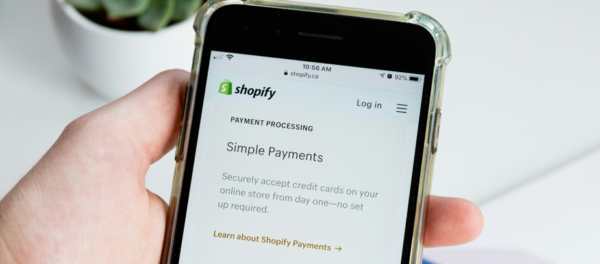How to Create a B2B Content Strategy: The Ultimate Guide
Brand awareness, customer engagement, traffic, leads and sales can all be achieved through the production of high-quality content.
But before the content is produced, planning and preparation needs to take place. That’s where a content strategy can help.
A content strategy is an overarching plan for all of your digital content. From blogs and whitepapers, to social media and video content, a strategy is essential for understanding the purpose behind your content.
Why are B2B content strategies important?
Not all content drives traffic and not all content converts. To ensure your digital content meets your objectives and reaches the right audience, there’s a few points you’ll need to consider first.
What kind of users are you targeting with your content? Which format are they most likely to engage with? How should your content look? Where should the CTAs be positioned? And what exactly do you want your content to achieve?
An effective content strategy should include the answer to all of these questions. From the user research and content formats to the frameworks and design, a good strategy covers it all. Focusing on the bigger picture enables you to have a clear plan and structure for all of your content efforts, ensuring they’re successful and produced with your goals in mind.
9 steps to create a B2B content strategy
So before you jump into content creation, how exactly do you put together an effective B2B content strategy?
1. Identify your target audience
First things first, who are you creating content for? By understanding exactly who is going to read your content, you can ensure it’s written with those people in mind.
A useful way to understand your target audience is through the use of customer personas. These are defined as semi-fictional characters which represent your ideal prospect. Through demographic reports, user interviews, forums, social media and surveys, you can identify key insights into the people and businesses who are likely to read your content.
Identifying your target audience is key for developing content that resonates with them. By understanding their pain points, how they engage with content and how they make decisions, you can tailor your messaging and streamline the conversion journey.
2. Decide on your objectives
Your objectives should drive your content strategy. But not all content will have the same aims.
For example, is it topical content to build authority? Are you aiming to build brand awareness and secure the top ranks within the SERPs? Which pieces of your content are to generate leads?
Knowing what your goals are for each piece will help you understand the purpose behind the content you’re creating. Following the SMART objective method is a useful way to set realistic goals that are Specific, Measurable, Achievable, Relevant, and Time-bound (SMART).
3. Choose which content formats to opt for
Once you’ve identified your target audience and decided on your objectives, you’ll need to establish which content formats are best suited.
Each stage of the buyer’s journey (awareness, consideration and decision) will also require different types of content, each with a unique aim.
Some of the most popular B2B content formats include:
- Blog posts – this form of content is extremely versatile and can include topical blogs, product/service comparison blogs, search-led blogs and even conversion-led blogs.
- Case studies – these are a great way to demonstrate the benefits of your business by highlighting how your service or product solved a challenge and offered a solution.
- Ebooks – these can be detailed “how-to” guides that educate the user on a certain topic, giving them helpful advice on the solution to their challenge.
- Whitepapers – this is long-form content that delves deeper into a specific topic or offers a solution to a problem that your target audience faces. Whitepapers are often used as gated-content, which can only be accessed after filling in a form/exchanging information.
- Infographics – this type of content is a useful way to succinctly convey complex information, making it easier for your audience to engage with key concepts quickly.
- Interactive content – this could be in the form of quizzes, checklists, animations or even calculators. Interactive content helps to keep the user engaged, whilst enabling you to collect audience insights.
- Social media carousels and posts – social media is an effective tool for brand awareness, helping you to reach a wider audience.
- Video content – video content has continued to grow in popularity. Whether it’s customer testimonials, a service/product explainer or even a how-to guide, videos offer an engaging way for users to connect with the business.
- Email content – emails, such as newsletters, can be used to nurture customer loyalty and keep users connected. Emails can feature product/service information, along with repurposing content you have previously created.
5. Create a content calendar including industry events
A content calendar is an easy way to organise your content plan for the year ahead. Not only is this an effective way to keep track of your content plans, it also helps you consider exactly when this content should be published.
Are there any key industry dates that you could create content around? Are there any upcoming changes within the industry that you need to keep in mind? Is your content aligned with relevant seasonal events? By mapping out your content month by month, you can focus on creating relevant and timely pieces that your audience will engage with.
6. Produce detailed frameworks including CTAs
A content framework or copy brief is a plan or template that acts as a guideline for the person producing the content. Having a framework in place improves efficiency, organisation and ensures that everything is produced with your goals and target audience in mind.
So, what exactly does a content framework include? Whilst there are many different ways to produce and lay out a framework, it should include information on:
- The content format
- The purpose and objectives of the piece
- Information on the target audience/customer personas
- The tone of voice to use
- Key products/services to promote within the piece
- The structure of the content (what will the different sections include)
- SEO information (meta data, keywords to target and internal links)
- CTAs to include and where they should be positioned
- Key images/visuals to include
- Competitor examples
- When and where the content will be distributed
- Key points on how the content should look/design elements
7. Decide where best to distribute your content
Different types of content perform best in different places. It all comes back to your objectives for the piece. Are you offering valuable, in depth content that should sit on your website or blog? Are you trying to raise brand awareness through a social media post? Do you want to generate leads through gated content?
Understanding the purpose behind the content you create is key to ensure that it reaches the right audience on the right platforms.
8. Consider design and layout
Content isn’t just about the words on a page. You’ll need to consider where each section should sit and how you’ll maximise engagement. From CTA positioning to content formatting, there’s plenty to consider.
When designing the layout for your B2B content, keep the following in mind:
- Branding consistency
- Clear messaging
- Readability and content formatting
- Visual hierarchy
- Making use of whitespace
- Incorporating imagery and data visualisation
- Ensuring responsive design
- Design and positioning of CTAs
- Accessibility
9. Report on performance, keeping KPIs in mind
So, how did your content perform? Whilst your initial thought might be to report on how many leads were generated, it’s important to remember what the aims of the piece were. Was it to generate brand awareness and traffic? Was it a piece aimed at boosting topical authority, therefore less likely to generate leads? Perhaps your content was repurposed on social media where it then performed the best?
Whether it’s sessions, conversions, qualified leads or ranks, keep your objectives in mind when reporting on performance.
Content plays an essential role in B2B marketing, which is why having an effective content strategy in place is so important. The more thought that goes into your content process, the more results you’re likely to achieve.
If you’re interested in our content strategy and writing services, get in touch with our specialist team today.



